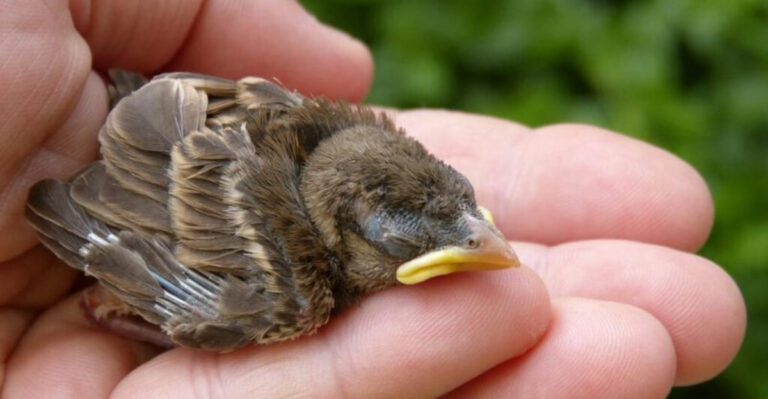Rare Animal On The Brink Of Extinction Captured On Camera In California National Park
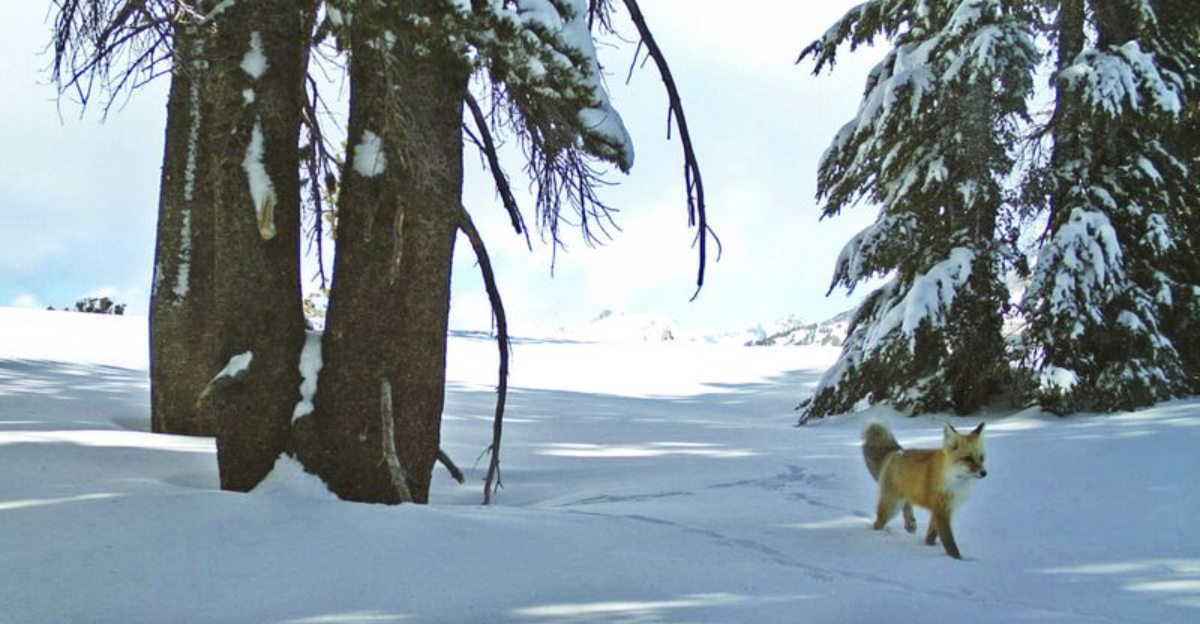
A remarkable discovery has thrilled wildlife experts at Lassen Volcanic National Park! Motion-sensor cameras recently captured images of the Sierra Nevada red fox, one of North America’s rarest and most endangered mammals.
With fewer than 50 individuals believed to exist in the wild, this sighting brings new hope for conservation efforts. The fox’s appearance marks an exciting chapter in the ongoing battle to save this beautiful creature from extinction.
Mysterious Mountain Dweller
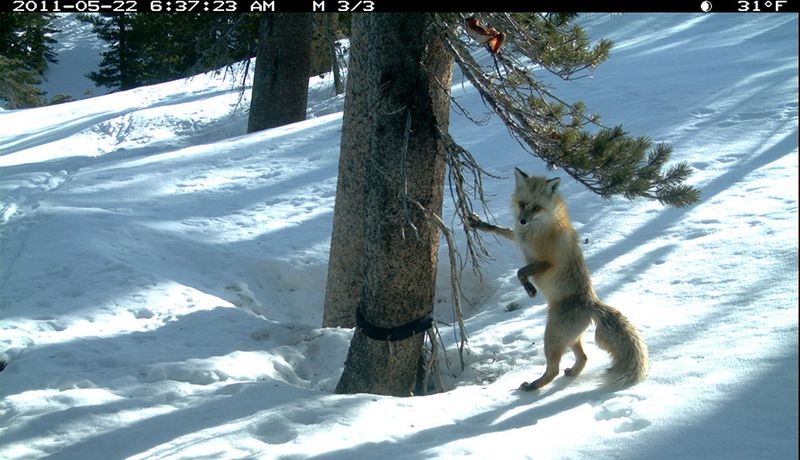
The Sierra Nevada red fox lives in some of California’s highest and most remote mountain regions. These elusive creatures prefer elevations above 6,000 feet where few humans venture, making them incredibly difficult to spot in the wild.
Their secretive nature has contributed to the limited scientific knowledge about them. Before the recent camera trap success, the last confirmed sighting in Lassen Volcanic National Park occurred in 2010, leaving many to wonder if they still inhabited the area.
Scientists describe them as “mountain ghosts” because of their ability to survive in harsh alpine environments while rarely being seen by human eyes.
Distinctive Fiery Appearance
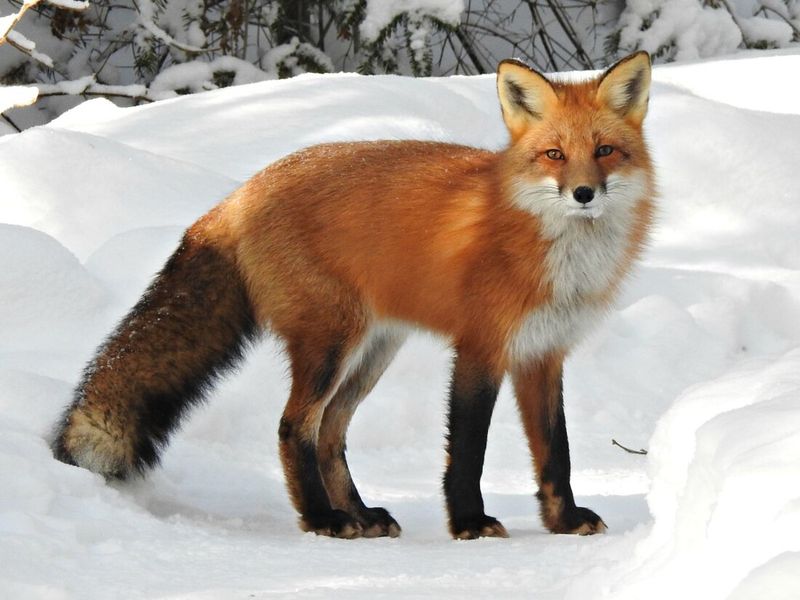
Unlike their more common relatives, Sierra Nevada red foxes sport a striking rusty-red coat that seems to glow against snowy landscapes. Their bushy tails, tipped with white, make up nearly half their body length and serve as warm blankets during frigid mountain nights.
Black-backed ears stand tall on their alert faces, while their white-tipped paws act like natural snowshoes. These adaptations help them move silently across deep snow while hunting.
At just 8-15 pounds, they’re smaller than many people expect – about the size of a house cat, though their thick fur makes them appear larger.
Population Crash Mystery
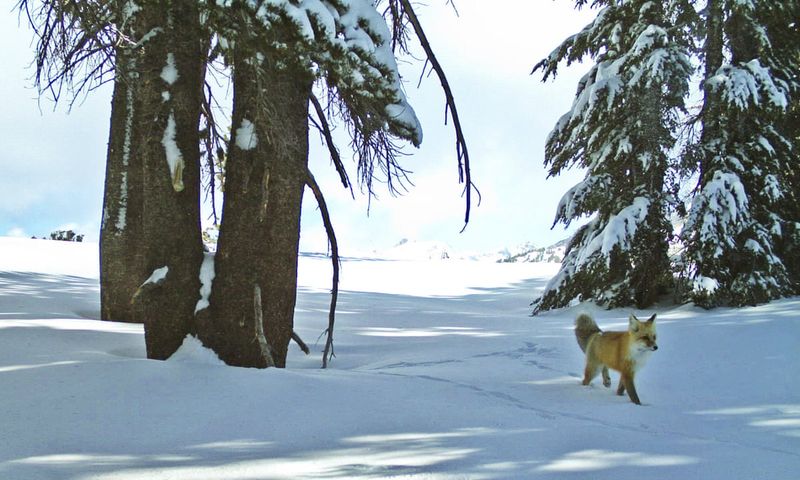
What caused these foxes to nearly vanish remains partly unsolved. Scientists believe a perfect storm of threats pushed them to the edge. Climate change has altered their high-mountain habitat, shrinking the cold environments they’ve specially adapted to over thousands of years.
Competition from coyotes moving into higher elevations further squeezes their territory. Historical fur trapping, though now illegal, devastated their numbers before conservation laws took effect.
Disease spread from domestic dogs has also impacted wild populations. Genetic testing shows alarming low diversity among surviving foxes, making them vulnerable to even minor environmental changes.
Camera Trap Breakthrough
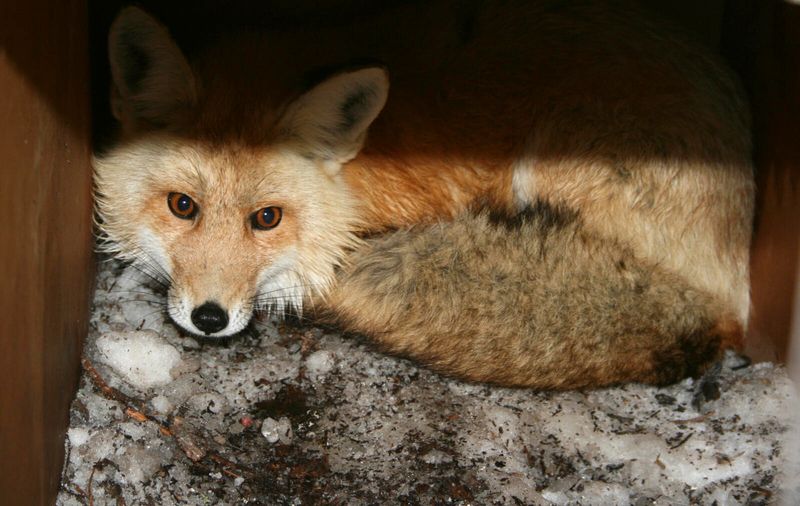
The recent photos came from a network of motion-triggered cameras hidden throughout Lassen Volcanic National Park. Rangers strategically placed these cameras near potential fox trails, baiting areas with scent lures that wouldn’t feed but might attract curious foxes.
For three years, researchers checked thousands of images – mostly capturing deer, bears, and countless branches moving in the wind. Their persistence paid off when they discovered several clear images of a Sierra Nevada red fox investigating a camera station.
The fox’s distinctive ear shape, coat pattern, and tail confirmed its identity beyond doubt, sending waves of excitement through the conservation community.
Winter Survival Specialists
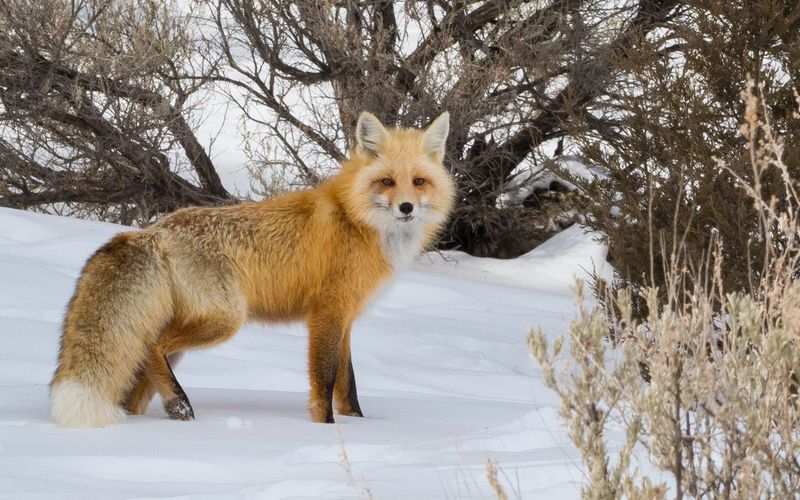
Winter temperatures in the Sierra Nevada mountains can plummet to -40°F, yet these foxes thrive where other animals retreat. Their incredibly dense fur – the warmest of any mammal – provides superior insulation against brutal mountain conditions.
When blizzards rage, they dig snow dens or shelter in rock crevices. Their excellent hearing allows them to detect rodents moving beneath deep snow, and they’ve perfected a unique hunting technique – leaping high and diving headfirst to catch prey hidden under the snowpack.
Their metabolism slows during winter’s harshest periods, requiring less food when hunting becomes difficult.
DNA Detective Work
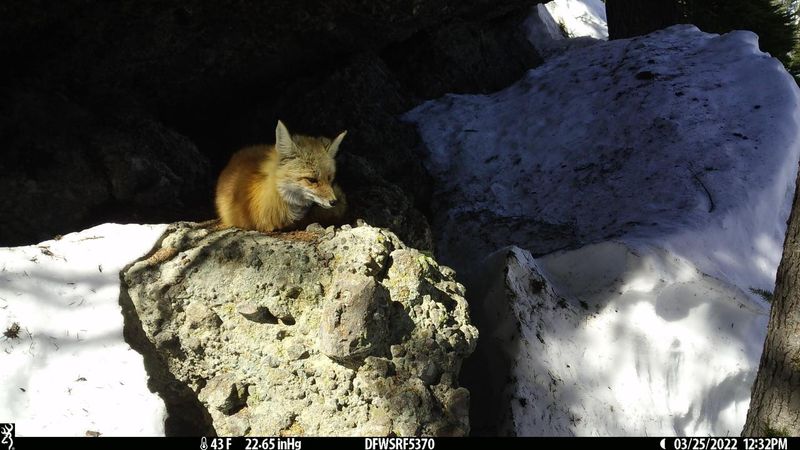
Modern science has revolutionized fox research without requiring direct contact with these shy animals. Researchers collect fox scat (droppings) found in the snow, extracting DNA to identify individual foxes, their gender, and family relationships.
From just one scat sample, scientists can determine what the fox ate, its stress hormone levels, and even exposure to environmental toxins. This non-invasive approach prevents adding stress to already vulnerable animals.
Genetic analysis revealed something shocking – Sierra Nevada foxes split from other red fox populations over 20,000 years ago during the last ice age, making them genetically unique and irreplaceable.
Volcanic Park Sanctuary
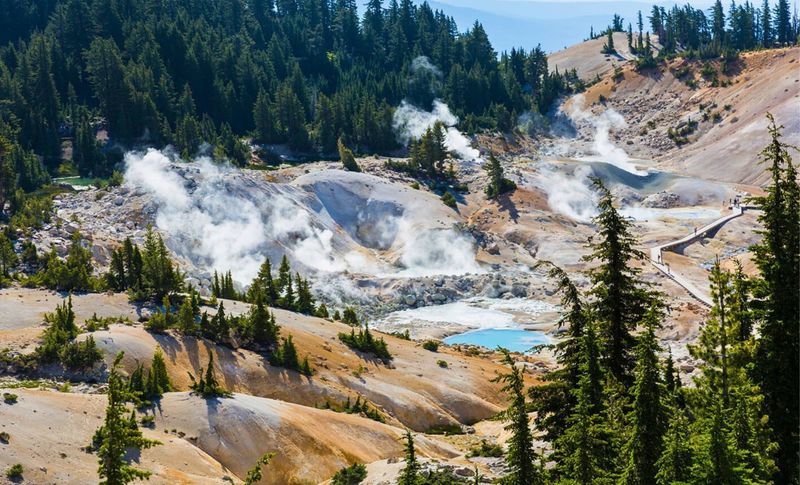
Lassen Volcanic National Park’s unique landscape offers perfect fox habitat. The park’s remote backcountry, with its volcanic features and limited human access, provides natural protection for shy wildlife.
Established in 1916, the park preserves over 100,000 acres of wilderness, including Lassen Peak – one of the world’s largest plug dome volcanoes. Rangers have implemented special protections in areas where fox sightings occur, sometimes restricting human access during sensitive seasons.
The park’s diverse elevation zones create multiple habitat types, from lower forests to alpine meadows, allowing foxes to follow seasonal food sources as conditions change throughout the year.
Midnight Menu Preferences
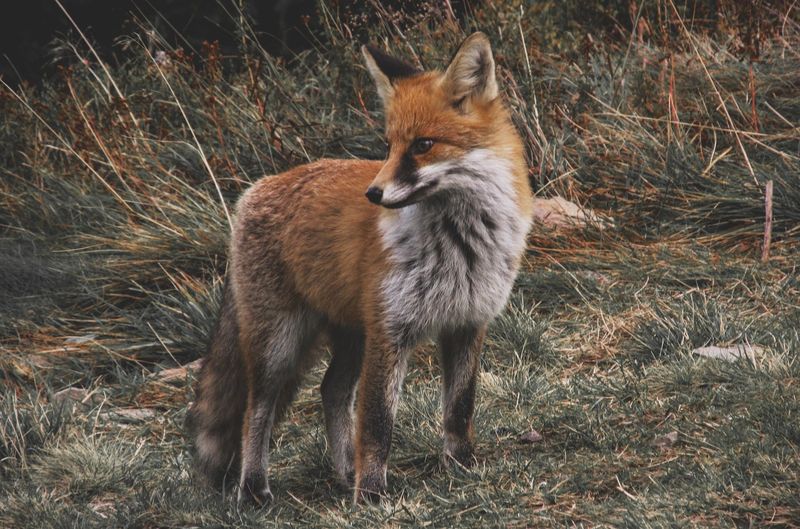
Sierra Nevada foxes have surprisingly varied diets that change with the seasons. Small mammals like voles, mice, and pikas make up their main menu, but they’re opportunistic eaters who readily adapt. Summer brings feasts of insects, berries, and even bird eggs when available.
Unlike many predators, they’re known to cache (store) extra food by burying it in the snow or soil for later – a crucial survival strategy in harsh mountain environments.
Motion-activated cameras have captured fascinating footage of foxes hunting at night, revealing they’re most active during twilight hours when their sensitive night vision gives them an advantage over prey.
Family Life Secrets
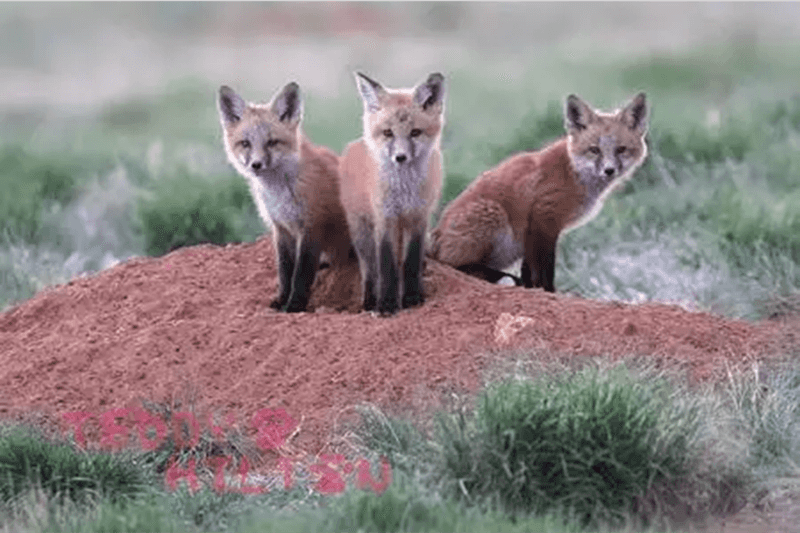
For most of the year, these foxes live solitary lives, each patrolling territories spanning up to 10 square miles. February brings breeding season, when rare vocalizations – high-pitched barks and screams – echo across moonlit snow as they seek mates.
After a 50-day pregnancy, females give birth to 2-4 kits in underground dens, often dug into north-facing slopes where snow persists longest. Both parents care for young, with fathers bringing food while mothers rarely leave newborns.
By autumn, young foxes strike out independently, facing the dangerous challenge of establishing their own territories in increasingly limited habitat.
Conservation Heroes’ Efforts
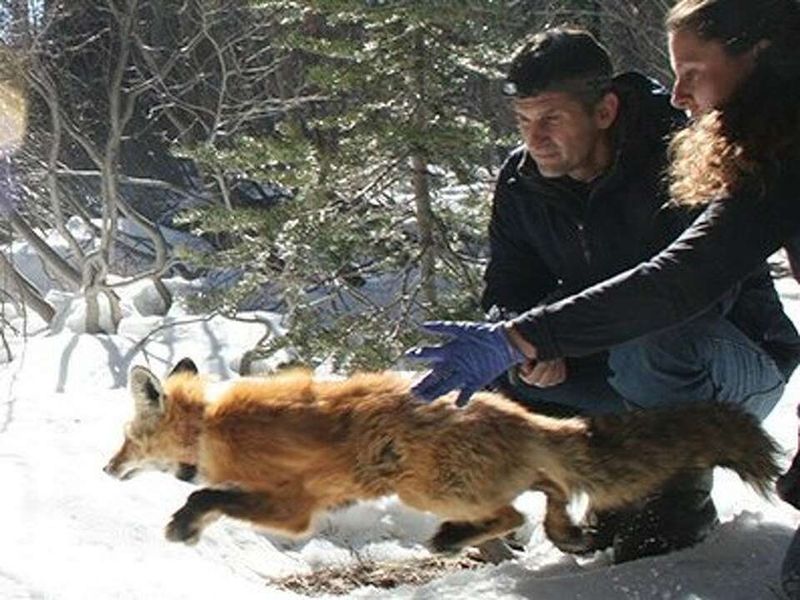
A dedicated team of biologists, park rangers, and volunteers works tirelessly to protect these rare foxes. Their efforts include maintaining wildlife corridors between isolated populations to prevent genetic bottlenecks that threaten the species’ future.
Conservation strategies involve educating visitors about keeping appropriate distances from wildlife and properly storing food to prevent foxes from associating humans with easy meals. Community science programs engage hikers and backcountry users to report potential fox sightings.
Advanced tracking technology now includes lightweight GPS collars specially designed for these small animals, providing crucial movement data while minimizing stress.
Hope On The Horizon
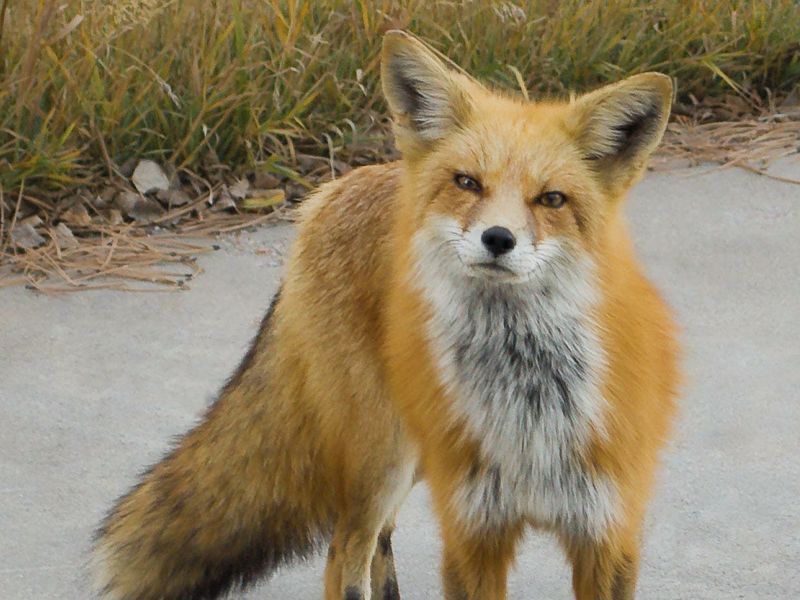
Recent camera trap success brings renewed optimism for the Sierra Nevada red fox’s future. The photographs provide evidence that conservation efforts are working and that this tenacious species continues to fight for survival.
Federal protection under the Endangered Species Act now shields these foxes from human-caused harm. California has implemented a Sierra Nevada Red Fox Conservation Strategy, coordinating efforts across multiple agencies and landowners.
Each confirmed sighting helps scientists refine habitat models and protection plans. While their situation remains precarious, the foxes’ proven adaptability over millennia gives conservationists hope that with continued human help, they can recover from the brink.





